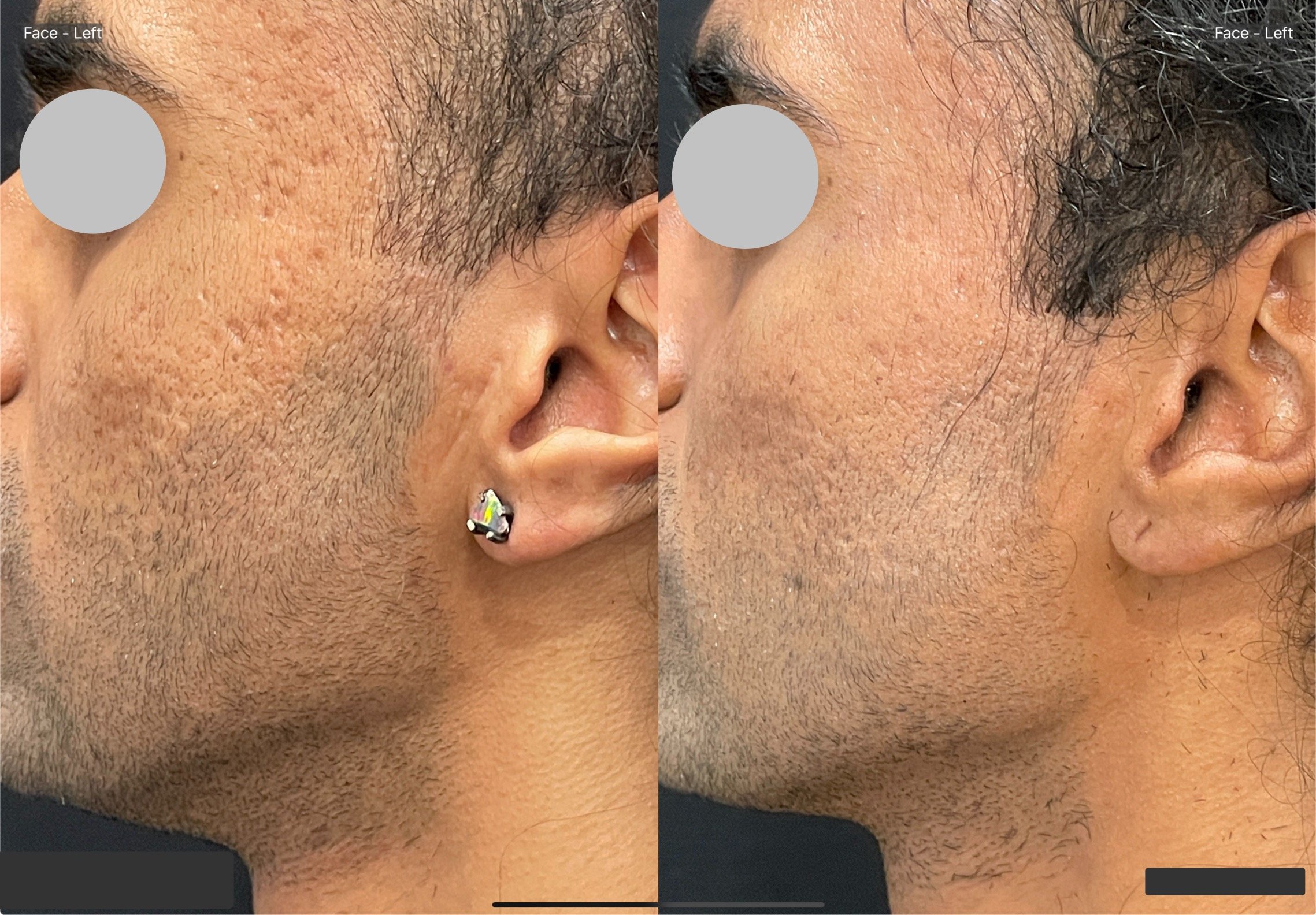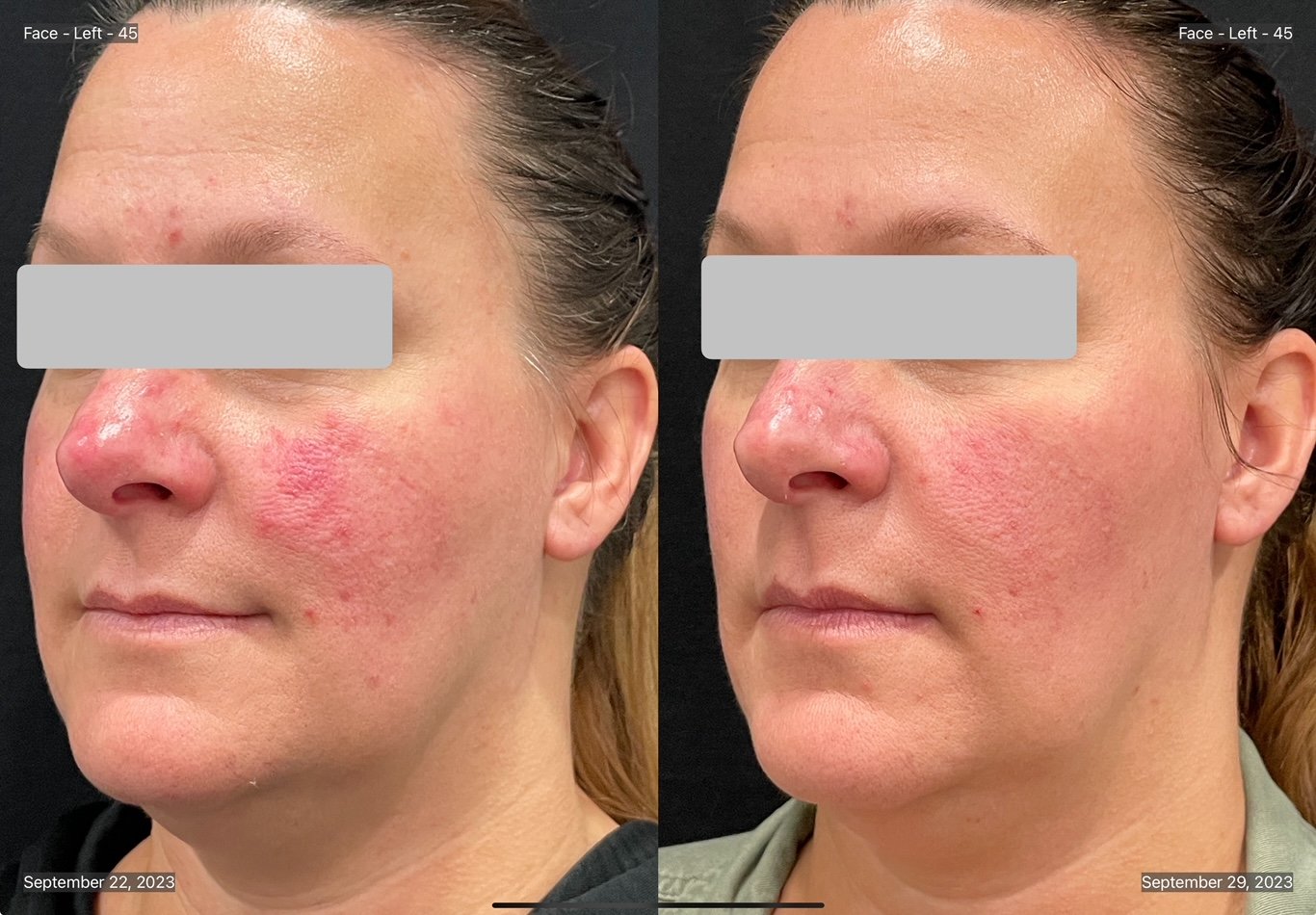Why Steroid Injections for Cystic Acne is a Bad Idea…
Steroid injections (Kenalog or Triamcinolone) for acne have long been considered helpful in reducing inflammation for cystic acne. While steroids do indeed reduce inflammation, steroids can also break up collagen, leading to depressed (pitted) acne scars. Loss of collagen leads to thinning of the skin. Steroid injections can also cause skin discoloration and can even melt fat at the site of injection.
So would you rather trade the short-term benefit of shrinking the swelling of a cystic pimple for the long-term complication of a depressed or pitted acne scar, skin discoloration or thin skin?
WHAT ARE THE POTENTIAL HARMFUL EFFECTS OF STEROID INJECTIONS FOR CYSTIC ACNE?
Skin Atrophy or depressed scars: Steroids can weaken or destroy collagen, resulting in a pitted appearance of the skin.
Fat Atrophy: Steroids can melt fat, leading to a sunken appearance of the overlying skin.
Skin Necrosis or Ulcerations: Because steroids can destroy collagen and fat, the skin can get very thin to the point of causing an ulcer.
Pigmentation changes: Steroids can cause lightening or darkening of the skin tone.
Short term benefit: While steroids can temporarily reduce swelling caused from cystic acne, it does not address the root cause of acne nor does it offer a permanent or long-term solution for cystic acne.
Systemic effects of steroids: When steroids are absorbed within the body, potential side effects can occur such as weight gain, stretch marks, depression, moon face and menstrual cycle irregularities.
Pain during injections: Steroid injections for cystic acne can be very painful even if local numbing medication is provided.
Spread of Infection: Steroids reduce inflammation as well as the body’s immune response, causing delayed healing. The process of inserting a needle into an infected cystic acne can potentially spread the infection, leading to cellulitis (skin infection).
WHAT CAUSES CYSTIC ACNE?
Cystic Acne is caused when bacteria, dead skin cells, and oil (sebum) get trapped below the skin’s surface and become infected. This leads to an inflamed, pus-filled cyst that can hurt to touch. Diet, hormones, stress, lifestyle, and genetics can contribute to the development of cystic acne.
How can cystic acne be safely treated?
Acne treatment can vary depending on the person’s unique skin conditions, lifestyle, prior treatment history, etc. Root cause analysis and treatment is the most effective way to address acne. Targeting the root cause(s) in ways that can promote healing without the harmful side effects or disfigurement is optimal.
It’s best to seek the advice of a professional who specializes in treating acne and acne scars. Often treatment options can be combined for synergistic effects. Persistence and patience is often necessary for lasting and impactful results. Dr. Kaplan at Rejuve Medspa has extensive experience and expertise in managing clients of all ages with active acne and acne scars. Book a consult to learn more about best options for you. It’s important to appropriately manage cystic acne in order to avoid the development of deep or pitted acne scars and skin discoloration.
Treatments to prevent or manage cystic acne include:
Tretinoin or Retinols
Facial Cleansers
Topical Antibiotics
Diet
Hormones
Chemical Peels
Lasers
Low Level Light Therapy
RF Microneedling
Before and After Photos of Acne Scar Treatment



